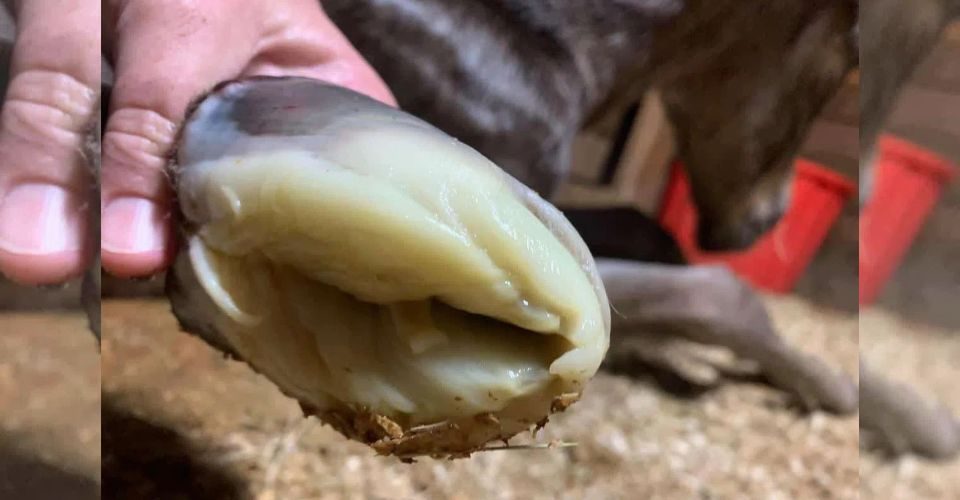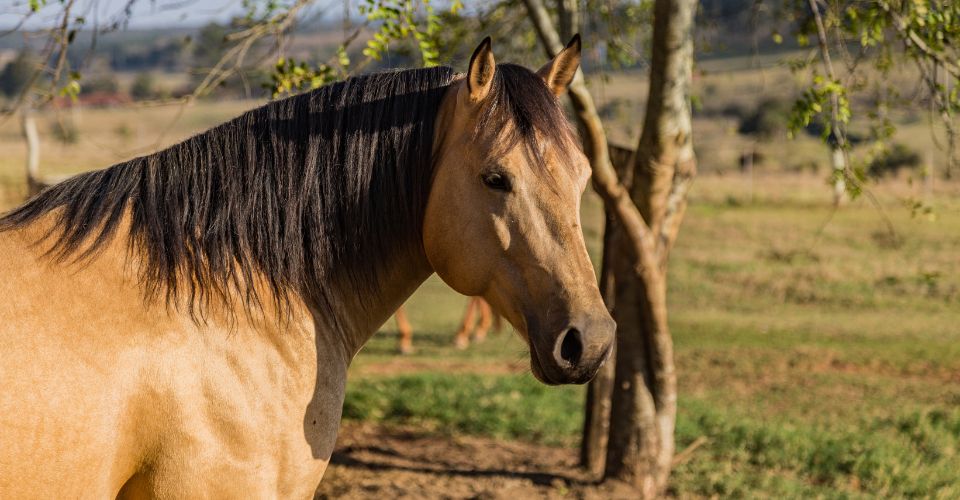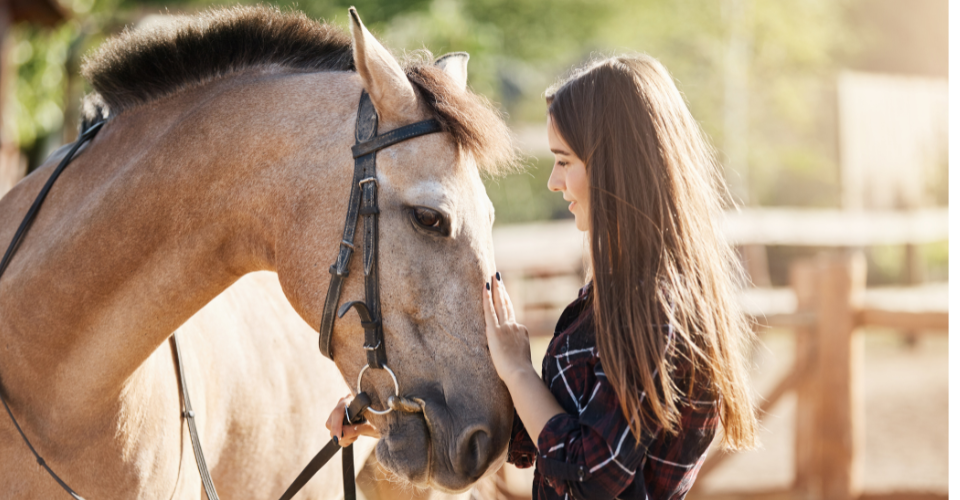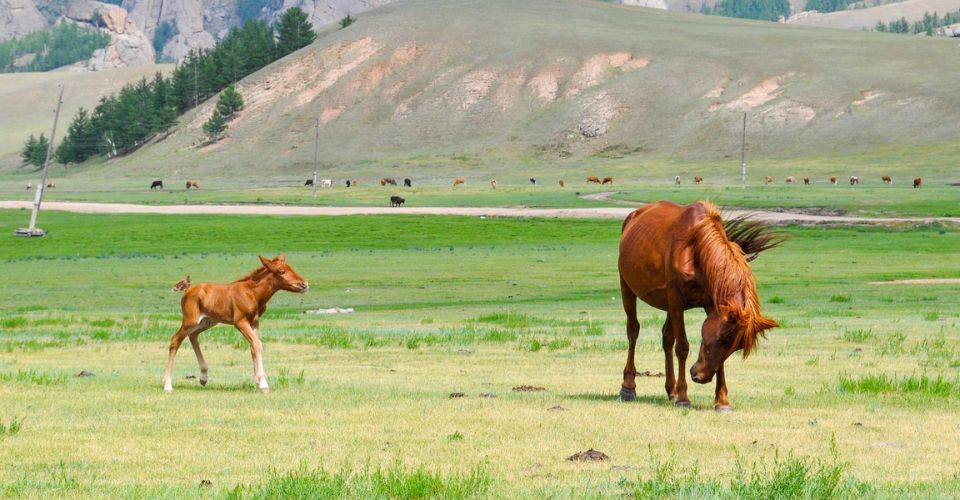Have you ever wondered why your newbie foal has white feet? Well, those are not white—those merely have a temporary whitish covering called foal slippers. Strange they may look, but they serve some special, vital purposes without which equine survival would be jeopardized.
Interested to know further? Scroll down.
What Are Foal Slippers?
Foal slippers refer to the rubbery, capsule-like deciduous coverings on the hooves of newborn equines. Their primary purpose is the protect the mare’s ureters from the hardness of the foal’s hooves as they travel along the ureters during delivery. All newborn horses have foal slippers.
Foal slippers also go by several other names, including fairy fingers (they look like finger projections) and golden slippers. The scientific term used for foal slippers is eponychium (pronounced ep-uh-nik-ee-uhm) and is widely used in veterinary sciences and embryological literature.
Foal Slippers Purpose Explained
Foal slippers protect the well-being of a mare’s birth canal as the baby horse slides down. Horse hooves are made up of a tough protein called keratin. They have only 25 percent water content, making them very hard and rigid—a requirement for wading through tough terrains. Though these properties are excellent if their interaction with harsh terrain is concerned, the fragile ureters cannot handle those.
As a natural protection, foal slippers come to the rescue. Owing to their rubbery and soft texture, they act as a ‘buffer’ between the hard and sharp hooves and the delicate birth canal.
Foal slippers also serve the purpose of survival. Foals are born with fully-developed hooves. They help them easily escape the predators who can easily spot them with the help of the placenta’s smell. Foal slippers cover the hooves to ensure that horse-moms also remain safe and capable of running if any predator gets to chase them.
Fun Fact!
Horses are born with 80 to 90 percent of their legs fully developed. This feature lets foals start moving within two hours of their birth.
What Happens When the Purpose Is Fulfilled?
Foal slippers fall off within 24 to 48 hours of the birth. These coverings are made of the same fibrous structural proteins that make an animal’s hair and skin. Once they come into contact with the air, they start losing the water content and eventually get hard. As the foal starts treading across the tough terrains, the already hardening slippers quickly begin their wear and tear until the sole of the hooves is revealed.
In some cases, foal slippers do not completely wear away even after several days have passed. The frog part of the hoof (the deep V-shaped groove on the bottom of the foot) might take some time to detach completely.
Has Your Foal Ever Stood Up?
You can easily tell if your pet horse’s baby has ever stood up or not and assess his well-being based on that. Just look at the hooves. He might struggle standing up and walking around if the foal slippers are there. It is a sign that you need a vet’s assistance.
What Happens After the Foal Slippers Have Gone?
The normal lengthening and further development of hooves begin as soon as the foal slippers are gone. At birth, foal hooves are quite conical and tapered in shape. As the foal grows and his hooves are developed, they extend downwards distally and increase their surface/contact area with the ground. If a horse moves often, the hooves get into the ‘normal’ shape more quickly.
Do Ponies, Donkeys, and Mules Also Have Foal Slippers?
Yes – horses are not alone; ponies, donkeys, and mules also have foal slippers. As a matter of fact, all animals with hooves, such as camels, antelopes, and cows, are born with these coverings. They serve the same purpose as in equines.
How to Take Care of Your Foal’s Hooves?
1. Do the Initial Examination
The initial examination by a vet or a farrier to assess limb conformation and the way of walking is very important to spot any irregularities. However, note that some deviations are normal, but only a professional can guess with surety the degree of the problem caused by the deviation.
Moreover, according to experts, hoof and limb abnormalities involve joints and therefore have a small window of opportunity to correct. When a foal grows, the bones and joints develop, decreasing the chances of correction.
2. Be Ready for the First Trim
The first trim should occur well before the foal completes his first year of age. It is a corrective trimming that can prevent any future stresses on the overall limb. However, it is not a one-time job: you should keep looking for any further deformities and correct those regularly.
3. Avoid the Basic Mistakes
- If you spot any deformities in your foal’s hoof, limit the exercising session until the issue is treated.
- Never over-trim the hoof. It is not good for active foals with significant daily activities as it can give rise to several other complications.
- Visit a farrier regularly. If you face any complications in grooming your foal’s hooves, do not hesitate to seek a pro’s assistance.
- Do not forget about the hoof angle. A wrong hoof angle can harm a horse’s overall health.
Conclusion: What Are Foal Slippers?
Foal slippers are the protein coverings found on the hooves of newborn equines. They help protect the mare from internal injuries during the birthing process without compromising the full development of the hooves. Once served the purpose, the slippers start drying up and eventually fall off within a short span, revealing the hooves. Though these finger-like coverings look very weird, they are a fantastic feature of the equine world!





